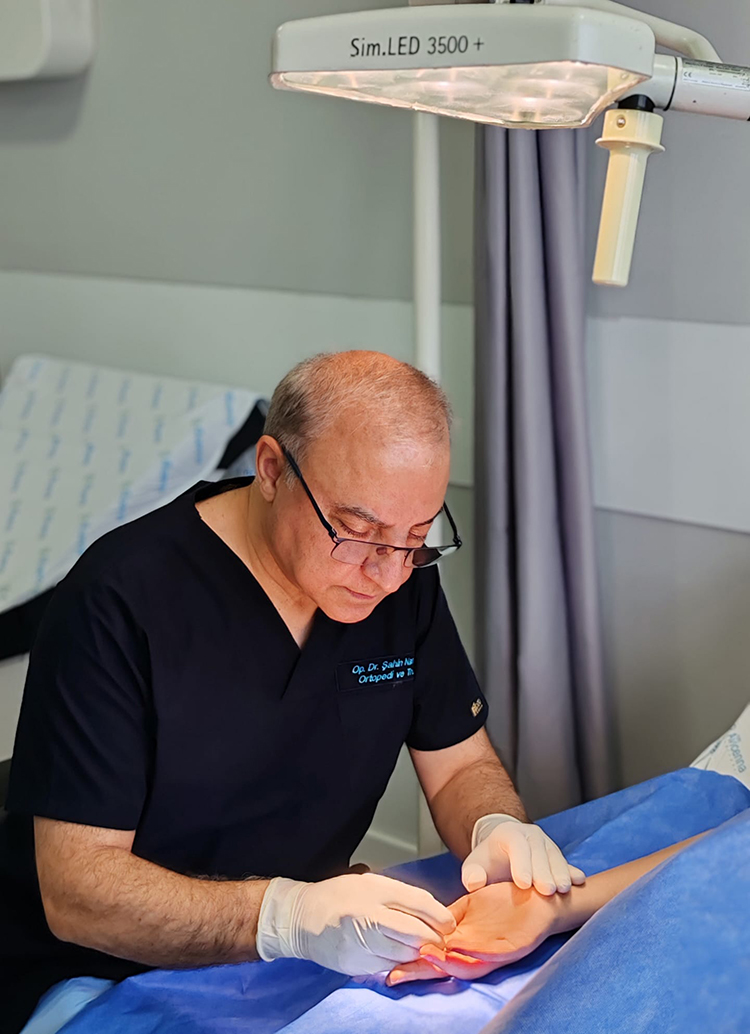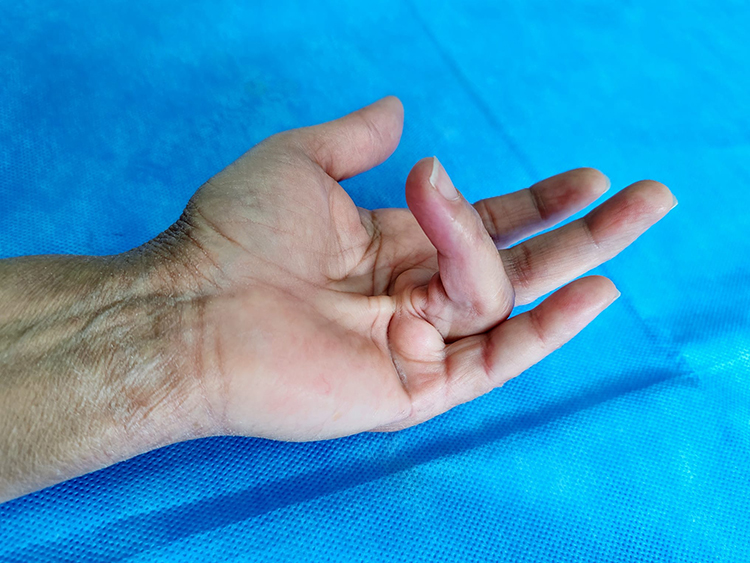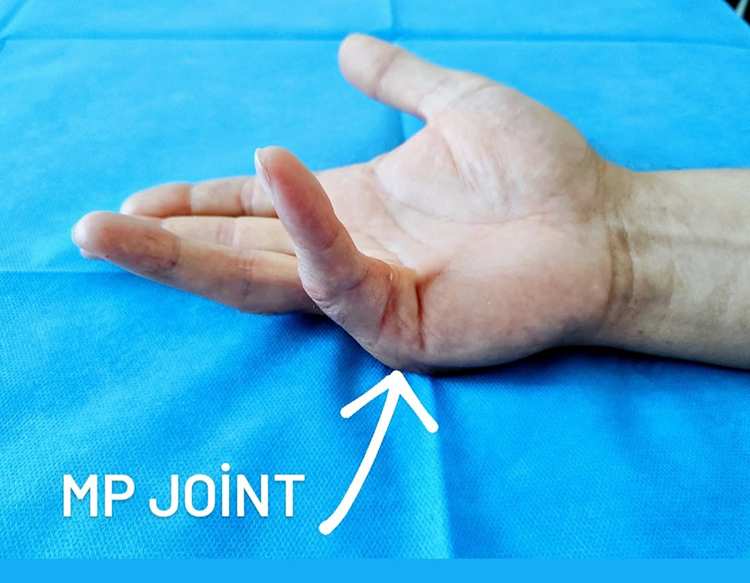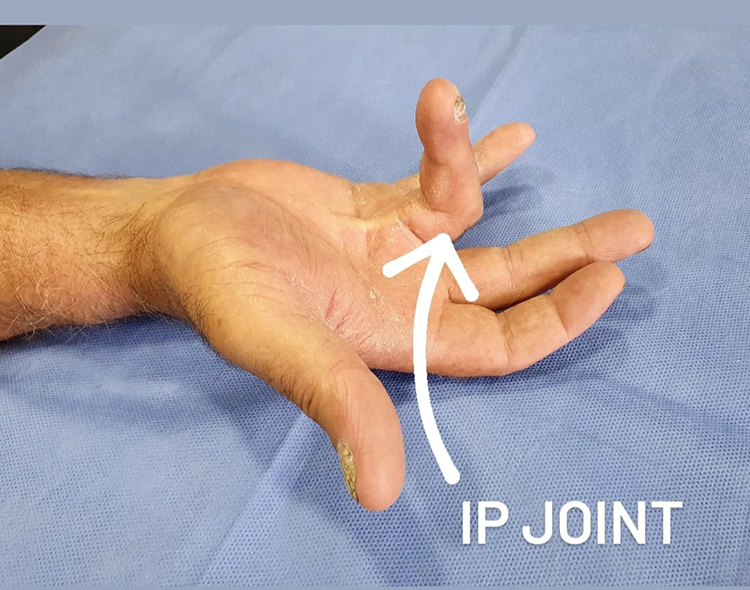
Dupuytren contracture is a disorder of the palm of the hand and fingers. In a normal hand, just beneath the skin there is a fibrous tissue called fascia. Fascia covers and protects important nerves, blood vessels and tendons. In Dupuytren's disease this fascia becomes abnormal. Parts of it thicken, forming nodules or bumps and cords in the hand. Over time these cords and nodules grow and gradually pull the fingers into a bent (flexed) position, making it impossible to fully straighten them.
The ring and little fingers are the most commonly affected digits. Patients can not straighten these fingers and this increasingly interferes with hand function. Patients may struggle to put their hands into pockets, shake hands, or wash their faces.

In most cases Dupuytren contracture can be diagnosed by the look and feel of the hand.
Patients are unable to place their hand flat on a table. In such cases, a procedure called Needle Fasciotomy is advised.
Unfortunatly there is no cure for Dupuytren Contracture. However with Percutaneous Needle Fasciotomy we can release and divide the thickened cord and improve finger extension and function.
Under local anesthesia, the fibrous cord responsible for the finger contracture is percutaneously divided at multiple points using the tip of a needle. This technique facilitates extension of the affected figer and results in improved functional outcomes.
No incision
No sutures
No hospitalisation
Local anesthesia
Short recovery period
Minimal downtime
Easier to release
Excellent outcome
Late recurrence

More challenging to treat
May not fully release
Shorter recurrence period

A bandage is applied after the procedure and should be removed the next morning.
Patients may wet their hands afterward.
Hand elevation is recommended for several days to reduce swelling.
Immediate hand use is permitted (e.g., driving).
Patients should perform finger extension stretches for several weeks.
For severe contractures, a night splint is advised for 2-3 weeks.
Complications are rare when performed by an experienced surgeon in percutaneous techniques.
Skin tears (10%) - The most common complication due to thin or adherent skin. It heals spontaneously in 1-2 weeks.
Dijital nerve injury (1%) - Causes mild numbness but dose not affect finger function.
Infection - Very rare; lower risk than open surgery.
Recurrance - Higher than open sugery (50-60% recurrence within 3-5 years).
Complex Regional Pain Syndrome (CRPS) - Extremely rare; chronic pain, swelling and stiffness, less frequent than with open surgery.
İncomplete correction – Possible in complex cases.
Copyright © 2025 Op. Dr. Şahin Nami
No Content such as Text, Images and Videos on This Site Can Be Used Without Permission.